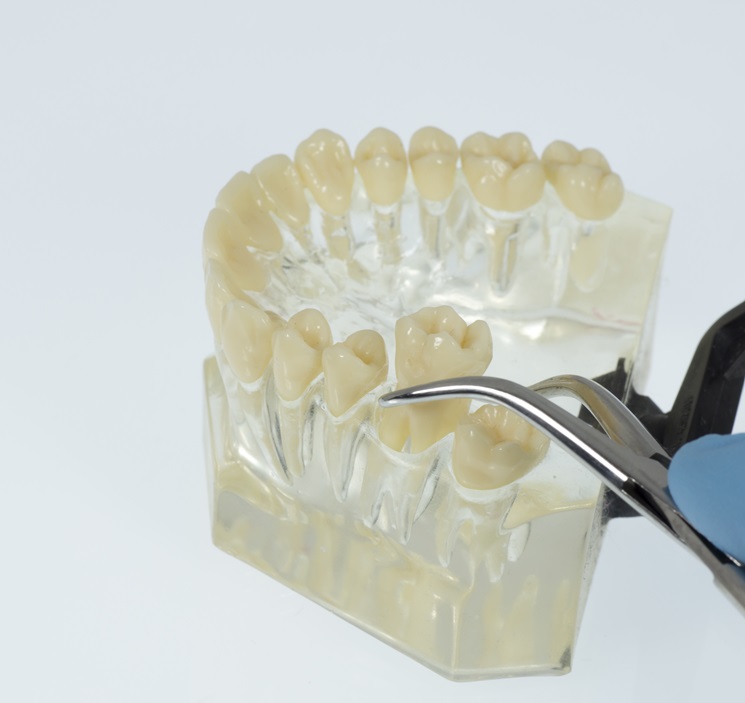
A potential risk factor for Alzheimer’s Disease that is just gaining recognition in scientific literature is tooth loss.
In our own dental clinic, every single patient who has been diagnosed with AD has lost at least one tooth. And in our own experience with my dad (DEC), he’d lost several over time. And since the type of tooth that is lost, the type of extraction that occurred, and your age all play a critical part in your healing – I’ll detail which ones he lost: front tooth (#8); second bicuspids # 29 & 13; and finally 1st molar #14. All but the front tooth involved longer wound healing. As age and complexity of the extraction are critical contributing factors to Alzheimer’s – it’s important to note that # 14 was surgically extracted 9-28-2015. And was not done with any pre-medication…unfortunately, DEC never kept personal dental records on himself prior to 2015 – so we have no data on when the other extractions took place.
In speaking with friends who have a relative who has been diagnosed with AD, we have yet to find one AD patient that has all their teeth. Yet people do keep all their teeth. In fact, the sharpest patient we currently see in clinic is over 100 and has every single one of her teeth. Interesting.
Because of this novel subjective finding, we have been looking through the literature for studies that might identify a correlation between tooth loss and cognition loss.
And correlation there is. Early studies theorized that dementia was the cause of the the tooth loss, and not the other way around.
But as more researchers analyze this connection, they began to recognize that they’d got the chicken and the egg relationship wrong. That dementia was following tooth loss.
More importantly, they realized that not all tooth loss is the same. That’s when they began re-classifying tooth loss into two categories: 1) tooth loss due to trauma (sports injury) or elective removal (wisdom teeth falls to this category, 2) tooth loss due to infection/Periodontal Disease. And it’s in the latter category that our story relates back to AD: Where the tooth loss was specifically due to periodontal infections, a future diagnosis of dementia very often follows.
In 2017, the resulting data from this very comprehensive study (2), the authors write: “Tooth loss in older adults is mainly caused by periodontal disease and may reflect oral health over the life course. It can be both a symptom and a cause of further health complications, such as cardiovascular disease (CVD), cognitive impairment, and disability in older adults.”
The researchers went on to point out that women participants in the study were found to have greater tooth loss than men, an observation that is consistent with current risk factors for AD: “of the 2965 participants, partial or complete tooth loss were more likely to be older, female, and less educated, and have less alcohol consumption, slower walking speed, less physical activity, more often Caradiovascular disease (which has been found to be caused by the oral bacteria P. Gingivalis), hypertension (P. Gingivalis, as well), diabetes, and dementia, and high CRP (I discuss this inflammatory marker when discussing Alzheimer’s testing) compared to participants without tooth loss.” In fact, most of these correlations are consistent with what we currently know about Alzheimer’s – that risk factors for this disease include – being female, being older, being less educated, and having a auto-immune disease such as diabetes.
As we’ve long known that being female is one of the greatest risk factor for AD – especially in the area of tooth loss which is the topic being discussed here – we have been looking for differences between the two sexes as potential clues as to why this fact exists. In a future blog post, which attempts to explain why women may be more susceptible to AD, we will look at the role that sex hormones play in tooth loss for this biological gender.
But back to the topic at hand: the relationship between tooth loss and overall dementia.
In this 2019 study (3), the research team looked at the mother-load of outcomes data and found that: “A quantitative analysis of the included studies indicated that patients suffering from Alzheimer’s disease are characterized by a greater number of lost dental elements and general edentulism compared to the control.”
And in this 2019 study (4), the conclusion states: ” Individuals with tooth loss had a higher risk for dementia than those without tooth loss…Regarding the incidence of dementia, the OR increased as the number of missing teeth and age increased, and the OR was higher for women … and this difference was statistically significant … Taken together, these data may indicate that proper treatment of periodontal disease might lower the incidence of dementia…“
This last study really drives home the fact that early, proactive treatment of Periodontal Disease (which involves locally placing antimicrobials /antibiotics at the infected site and extensive professional cleaning of the subgingival tissues) is critical for reducing your risk of developing dementia. What this study found though, is that Periodontal Treatment didn’t necessarily reduce the number of extractions, what it did was reduce the odds of contracting Alzheimers Disease.
This almost seems to raise more questions than it answers. Until you look at what’s happening below the gum line.
Any time we lose a tooth, it takes six months to a year for our body to completely fill the open canal (which runs from the gum line down to the jaw bone) with new tissue. This healing wound represent a direct pathway to the Artery which feeds the roots of your teeth as this major blood supply runs along the bone of your upper and lower jaws. Of great importance is that the Maxillary Artery indirectly feeds your hippocampus, which happens to be one of the most affected areas in Alzheimer’s. It also directly feeds the brain’s Duramater, which is one of the outermost protective layers of your brain. And is how blood gets evenly distributed throughout the brain. We discuss this in greater detail under the subject of the glymphatic system.
For now, in discussing the overlap between tooth loss and dementia, when someone develops Periodontal Disease, they essentially have a unchecked infection below the gum line that is caused by something called “RED COMPLEX BACTERIA” – one of which is the P. Gingivalis bacterium. And this bacteria is incredibly virulent and destructive as it seeks out a source of sugars and Heme (both are found in blood). This bacteria will most definitely cause you to lose a tooth by harming the gum tissues, the periodontal ligament and finally the bone that supports the tooth. And if you lose a tooth due to this bacteria, the tooth will be gone, but the bacteria will still exist in the open canal that runs directly to the richest source of blood it’s ever seen (the Maxillary Artery). Once inside the Maxillary Artery, that nasty bacteria gains a free ride directly to your brain and the rest of your body.
But you may wonder how this could happen as our brain is so heavily protected by the Blood Brain Barrier – the ingenious gate-keeper for when harmful substances get close to entering. Think again: In this study (5), researchers mention how P. Gingivalis is able to break down the Tight Junctions that connect our teeth to our gums in order to infect/destroy subgingival tissue and bone. This is significant because the Blood Brain Barrier also uses Tight Junctions to form its restrictive barrier against invaders. Furthermore, the “tight junctions” found in our BBB and our Blood-Cerebral Spinal Fluid Barrier (BCSFB) weaken as we age – reason number one why Age is your highest risk for Alzheimer’s most certainly.
In fact, when you look at cases where an infected tooth was found to have caused a brain abscess (infection), one review (6) states that “Microorganisms that are abundant in the oral mucosa and dental plaque such as gram-positive bacteria, gram-negative bacteria, and fungi are commonly cultured from brain abscesses, implicating the oral cavity as a probable primary source of infection.” And in this specific case, the doctors stated that the bacteria that infected the patient’s brain “likely gained entrance to the vascular system and spread to the parenchyma of the brain.”
This is just our first blush on what likely will be a continuing topic on this site.
——————–
(1) Tooth loss is associated with severe cognitive impairment among older people: findings from a population-based study in Brazil. https://www.ncbi.nlm.nih.gov/pubmed/25407512 Peres MA1, Bastos JL, Watt RG, Xavier AJ, Barbato PR, D’Orsi E.
(2) Impact of tooth loss on walking speed decline over time in older adults: a population-based cohort study https://link.springer.com/article/10.1007/s40520-016-0630-6 Authors Anna-Karin WelmerDebora Rizzuto Marti G. Parker Weili Xu
(3) The Association between Tooth Loss and Alzheimer’s Disease: a Systematic Review with Meta-Analysis of Case Control studies https://www.ncbi.nlm.nih.gov/pubmed/31052367 Dioguardi M1, Gioia GD2, Caloro GA3, Capocasale G4, Zhurakivska K5, Troiano G6, Russo LL7, Muzio LL8.
(4) The effect of missing teeth on dementia in older people: a nationwide population-based cohort study in South Korea
https://bmcoralhealth.biomedcentral.com/articles/10.1186/s12903-019-0750-4
Jin-Joo Yoo, Joon-Ho Yoon, Min-Jin Kang, Manyong Kim & Namsik Oh
(5) Porphyromonas Gingivalis Periodontal Infection and Its Putative Links with Alzheimer’s Disease https://www.hindawi.com/journals/mi/2015/137357/abs/
(6) Brain Abscess Secondary to a Dental Infection in an 11-Year-Old Child: Case Report https://jcda.ca/article/c49 Christine E. Hibberd, BA (Hons), DMD; Trang D. Nguyen, DDS
Disclaimer
No content on this site, regardless of date, should ever be used as an absolute substitute for direct medical advice from your doctor or other qualified clinician. This article should be viewed as advice that is based on current research regarding the potential to slow and possibly prevent Alzheimer’s Disease.
Copyright © 2022 Curing Alzheimer’s Disease [EIN #88-3154550] All Rights Reserved. This information is not designed to replace a physician’s independent judgment about the appropriateness or risks of a procedure for a given patient. Always consult your doctor about your medical conditions. Curing Alzheimer’s Disease.com does not provide medical advice, diagnosis or treatment. Use of the site is conditional upon your acceptance of our terms of use.


